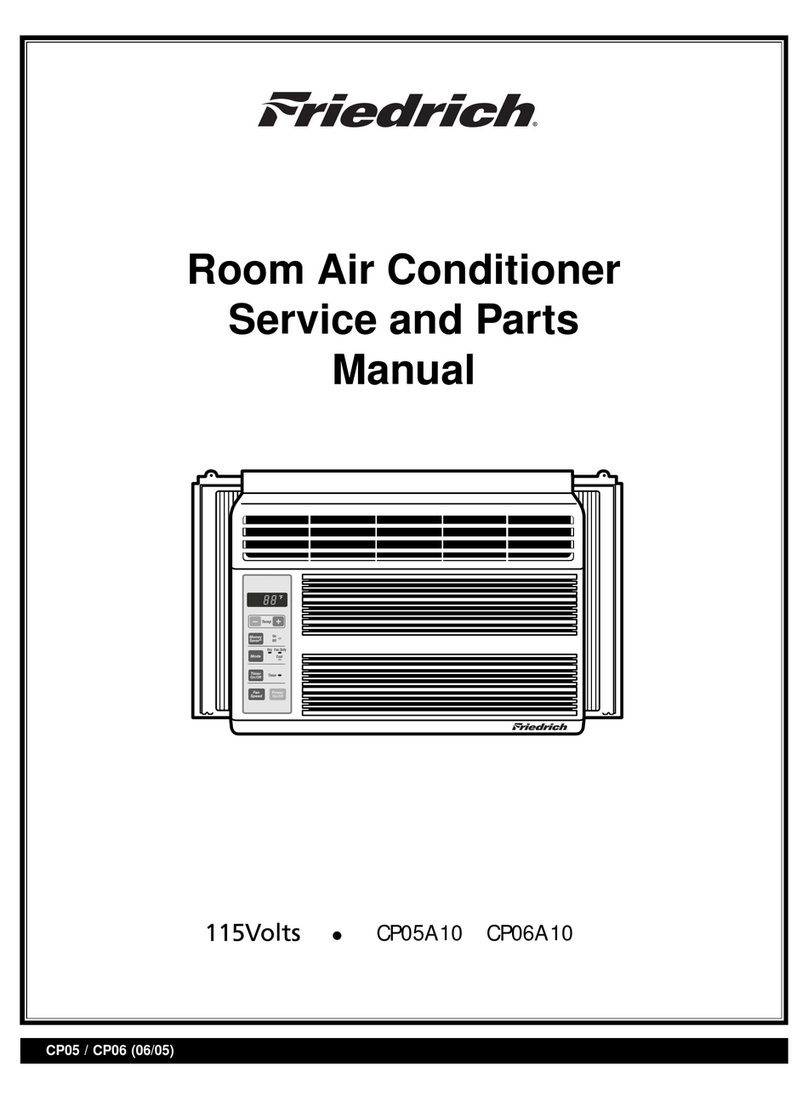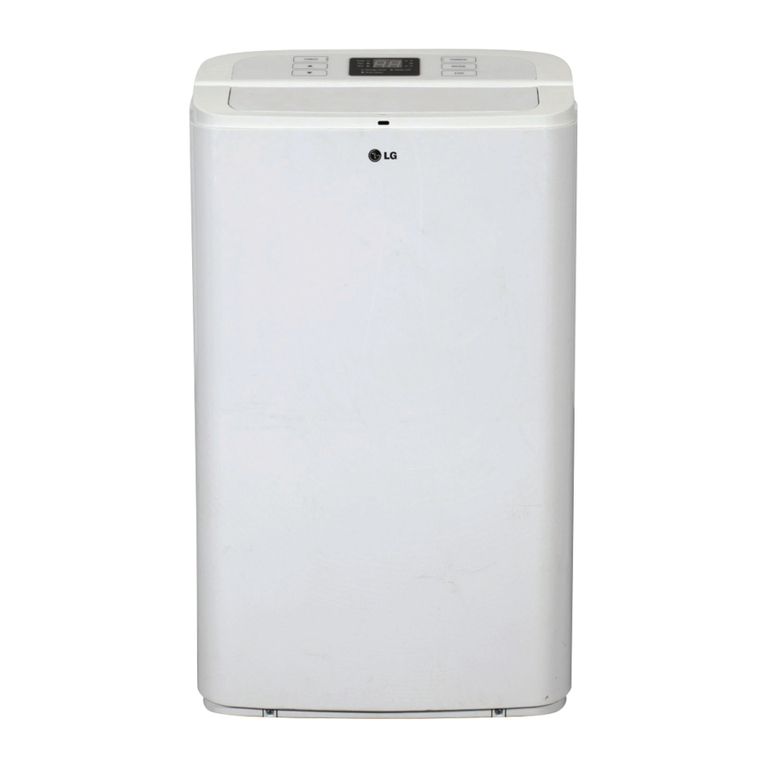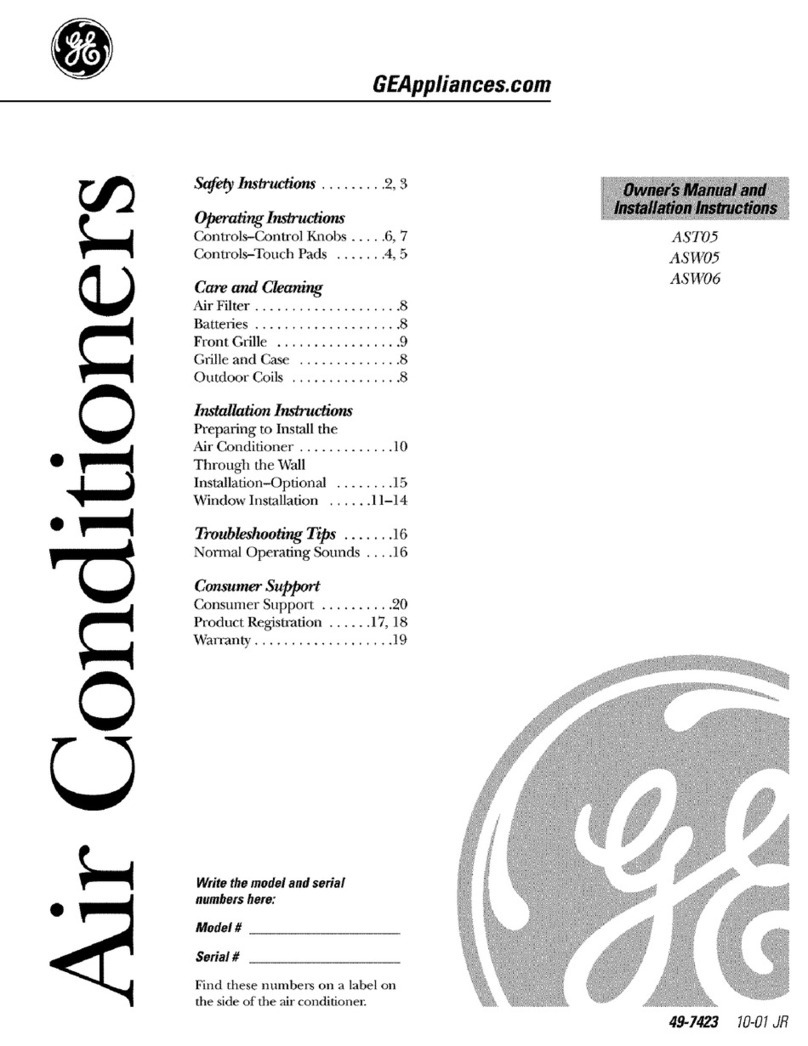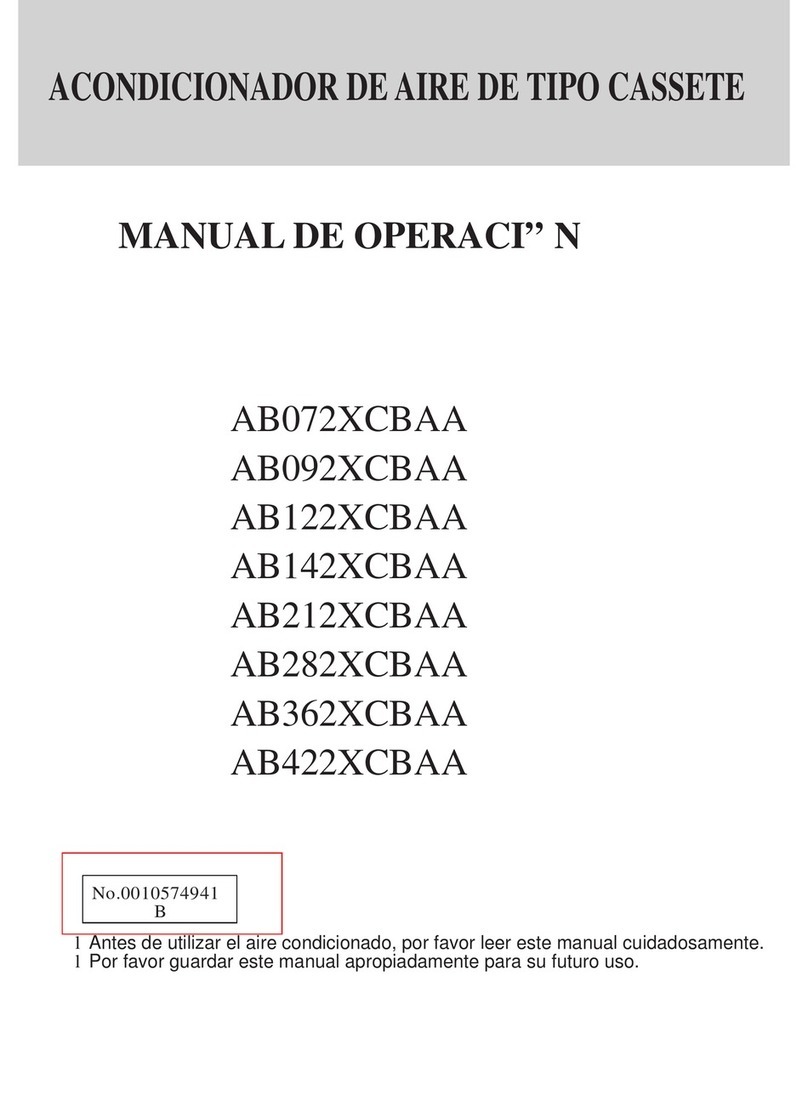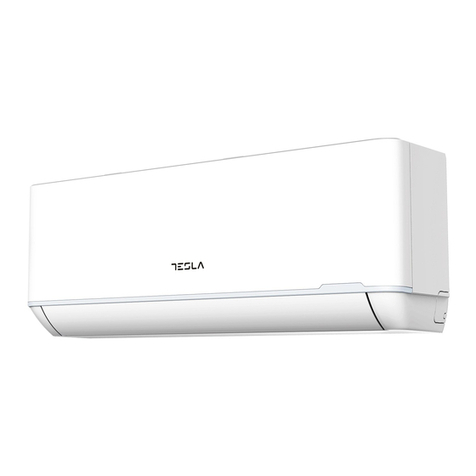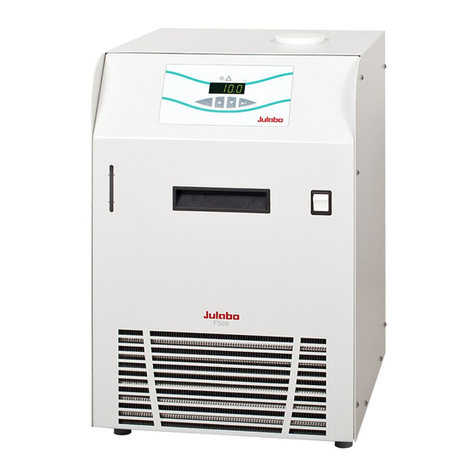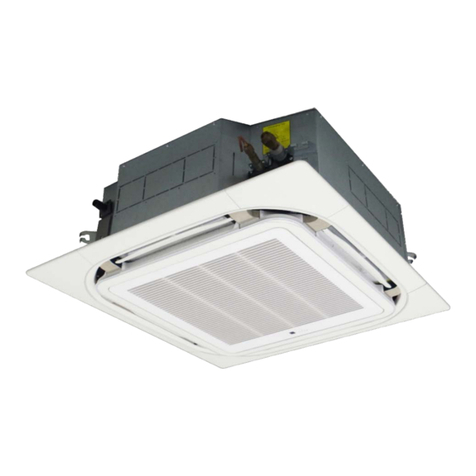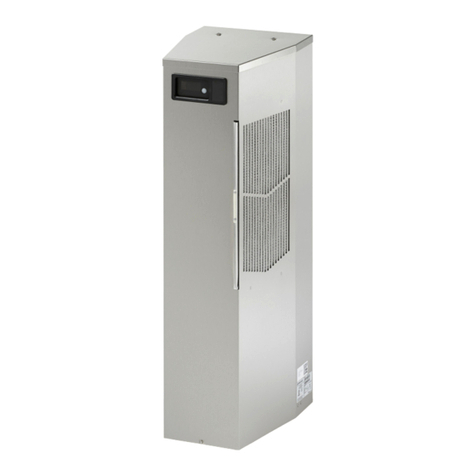ThermoKey IHT Series User manual

EN
IT
DE
ES
FR
PLRU
Instructions for handling and unpacking
Anweisungen für die Beförderung
und das Auspacken
Istructions pour la manutention
et le désemballage
Istruzioni per la movimentazione
ed il disimballo
Instruccionesde desplazamiento y desembalaje
Instrukcje dotyczace przenoszenia
i rozpakowywania
Инструкция по обращению и распаковке
ISO 9001 – ISO 14001 – OHSAS 18001
ISO 9001 – ISO 14001 – OHSAS 18001
ISO 9001 – ISO 14001 – OHSAS 18001
ISO 9001 – ISO 14001 – OHSAS 18001
ISO 9001 – ISO 14001 – OHSAS 18001
ISO 9001 – ISO 14001 – OHSAS 18001
ISO 9001 – ISO 14001 – OHSAS 18001
THE ORIGINAL VERSION OF THESE
INSTRUCTIONS IS IN ITALIAN
MT IM_TK GEN 12 2019

EN INSTRUCTIONS FOR HANDLING AND UNPACKING
IT ISTRUZIONI PER LA MOVIMENTAZIONE ED IL DISIMBALLO
DE ANWEISUNGEN FÜR DIE BEFÖRDERUNG UND DAS AUSPACKEN
ES INSTRUCCIONESDE DESPLAZAMIENTO Y DESEMBALAJE
FR ISTRUCTIONS POUR LA MANUTENTION ET LE DÉSEMBALLAGE
PL INSTRUKCJE DOTYCZACE PRZENOSZENIA I ROZPAKOWYWANIA
RU ИНСТРУКЦИЯПООБРАЩЕНИЮИРАСПАКОВКЕ
LANGUAGES SUMMARY
04
17
30
43
56
69
82
03
Heat Exchange Solutions
MT IM_TK GEN 04 2017
ThermoKey
02

Instructions
for handling
and unpacking
THE ORIGINAL VERSION OF THESE
INSTRUCTIONS IS IN ITALIAN
Quality Management System ISO 9001
Environmental Management System ISO 14001
Occupational Health and Safety Management System
BS OHSAS 18001
MT IM_TK EN 12 2019
EN

Heat Exchange SolutionsThermoKey IM - Instructions for handling and unpacking
EN
06
Manuals IM
MT IM_TK EN 12 2019MT IM_TK EN 12 2019
Heat Exchange SolutionsThermoKey
READ CAREFULLY AND BE SURE TO THOROUGHLY UNDERSTAND
ALL THE INFORMATION PROVIDED IN THESE INSTRUCTIONS BEFORE
DESIGNING AND, IN ALL CASES, BEFORE CARRYING OUT ANY HANDLING,
UNPACKING, ASSEMBLING, POSITIONING AND COMMISSIONING
OPERATION INVOLVING THE UNIT.
ThermoKey declines any and all liability for injuries to people or damage to property arising
from failure to comply with the indications given in this document.
The original version of this manual is in Italian and can be found on our website
www.thermokey.com
The translation into English conforms to the original and can be found on our website:
www.thermokey.com
The translations may contain mistakes. In case of doubt, always refer to the original Italian version
or to its English translation.
e “Instructions for Handling and Unpacking” are part of the manual and include the following
IM 1. CONTENT OF “INSTRUCTIONS FOR HANDLING AND UNPACKING”
IM 2. UNIT COOLER
IM 2.1. HANDLING
IM 2.2. UNPACKING
IM 2.2.1. PROVISIONS TO BE MADE BY CUSTOMER
IM 2.3. POSITIONING
IM 3. REMOTE UNITS (DRY COOLERS AND CONDENSERS)
IM 3.1. HANDLING TABLE-TYPE CONDENSERS AND DRY COOLERS
IM 3.2. UNPACKING
IM 3.3. ASSEMBLY
IM 3.4. V-TYPE CONDENSERS AND DRY COOLERS
IM 3.4.1 HANDLING
IM 3.4.2. PROVISIONS TO BE MADE BY CUSTOMER
07
07
07
07
08
08
08
08
09
09
10
10
10
INDEX
GENERAL INSTRUCTIONS FOR SAFE USE (IG)
INSTRUCTIONS FOR HANDLING AND UNPACKING (IM)
INSTRUCTIONS AND TECHNICAL SPECIFICATIONS (TC)
SPECIFIC USE AND MAINTENANCE INSTRUCTIONS (IS)
THE STRUCTURE OF THE MANUAL IS INDICATED HEREAFTER

Heat Exchange SolutionsThermoKey IM - Instructions for handling and unpacking
EN
0807
Manuals IM
MT IM_TK EN 12 2019MT IM_TK EN 12 2019
IM 2. Unit Coolers
IM 2.1. HANDLING
(Unit handling in factories and deposits, loading and unloading from/onto motor vehicles)
1. Always handle the packaged unit with a forklift, if the floor surface is regular and the difference in height when lifting
is limited. It is mandatory to check that the forks sufficiently protrude from the long side of the cage profile. The forklift
in use must be suitable for the weight of the unit, which is stamped on the specific ID plate identifying the product and
its geometric features.
2. Do not damage the unit throughout handling operations.
Below is a list of series of the unit coolers illustrated in this manual. Any unit missing from the list below is described
separately (see our website: www.thermokey.com).
Group A – Cubic unit coolers, series IHT, IMT, ILT, AHT, AMT, ALT, BHT, BMT, BFT, ALC, AMC, PH, PM, THT, TMT,
THB, TMB, FLT, FLA, FLC , FC.
Group B – Dual ow unit coolers, series DHS, DMS, DHL, DML, ADHS, ADMS, ADHL, ADML, GHS, GMS, GHL,
GML, SHS, SHL, SHS, SHL.
IM 2.2. UNPACKING
ermoKey Spa is able to provide unit coolers, both cubic and double ow (see above code), in two dierent modalities. With
supports facing downwards or upwards.
1. 1. Unit coolers with supports facing downwards. e unit cooler must be turned to allow mounting to the ceiling (rotation
must be carried out on a at, solid surface so that there are no obstacles that may jeopardize the unit integrity - Figure 1).
1. is operation must be carried out using suitable equipment with the specic unit sizes and weights (refer to the calculation
charts and to the catalogues or to the Internet website: www.thermokey.com in the catalogue download area).
2. Unit cooler with supports facing upwards. e unit cooler is placed in such way that it is ready for mounting to the ceiling.
3. Remove the upper part of the packaging, making sure that the unit and the remaining packaging do not get damaged as
they are necessary for installation (Figure. 2).
IM 3. Remote Units (Dry Cooler and Condensers)
Make sure that all the units are placed level or with a 1% slope on the liquid line.
IM 3.1. HANDLING TABLE-TYPE CONDENSERS AND DRY COOLERS
Following the condensers and dry cooler series present in this manual. The units not in the below list are treated
separately (see website www.thermokey.com)
Group A – Condenser series CHD, CLD, CQD
Dry Cooler series EHD, ELD, EQD, WHD, WLD, WQD
IM 1. Content of "instructions for handling
and unpacking"
In the “Instructions for Handling and Unpacking” list the necessary operations are indicated, by the means of numbered
gures, in order to allow the handling and unpacking of the various units. In the case of units not contemplated in
the following chapters, the correct information will be provided in specic documents-manuals (see website:
www.thermokey.com).
IM 2.2.1 PROVISIONS TO BE MADE BY CUSTOMER
e customer shall provide for the following:
§ transport of the unit;
§ handling, liing;
§ any equipment, resource and material/tool required to install the unit;
§ preparation of suitable rooms authorized for use in conformity with the regulations in force in the country of destination;
§ verication of accessibility and possibility of handling the unit inside the facility;
§ for unit coolers with water defrosting system, be sure to provide a discharge system with suitable drain pipes and protections
in accordance with national regulations in force in the country of destination.
IM 2.3. POSITIONING
e operations described below must be carried out using an aerial work platform, suitable for the kind of process to be
carried out.
1. Install the unit on the ceiling on a at, solid surface, which is capable of bearing the weight of the unit.
2. Before nal unit positioning, prepare supporting tie-rods on the ceiling respecting the distances between the holes
and the interaxle spacing of the supports (refer to the catalogue, or to the Internet website: www.thermokey.com in the
catalogue download area) and keeping at a sucient distance from the walls in order to allow for correct unit operation
and maintenance.
3. To size the supporting tie-rods, refer to the catalogue or to the Internet website: www.thermokey.com in the catalogue
download area. e information in the catalogue/on the website is useful to determine the weight of the packaged unit,
which is necessary to calculate the resistance of the supporting tie-rods.
4. Once the packaging cage has been lied, pass the tie-rods through the holes prepared on the fastening supports (Figure .3).
5. Block the nuts on the tie-rods aer tting a lock washer in between (Figure. 3-5).
6. Loosen the screws that hold the packaging to the unit and bring the packaging casing back down to the ground (Figure.4).
7. If the installation requires work to be carried out at a height or under overhanging conditions, thus posing a risk of
falling, do not use ladders, but follow the national regulations in force relating to safety during “work at a height”.

Heat Exchange SolutionsThermoKey IM - Instructions for handling and unpacking
EN
1009
Manuals IM
MT IM_TK EN 12 2019MT IM_TK EN 12 2019
Group B – Condenser series CH, CL, CQ, CR, KH, KL, KQ, KR, AKH, AKL, AKQ, AKR
Dry Cooler series DH, DL, DQ, DR, EH, EL, EQ, ER, GH, GL, GR, GQ, WH, WL, WQ, WR, MC, MK, TMK,TMC
1. Handle the packaged unit with a lifting crane, using an appropriate harnessing system around the packaging based
on the unit weight, indicated on the specific product identification label. A load distribution beam is recommended
when using the lifting and harnessing crane. If the floor surface is regularly paved and the difference in level when
lifting is limited, it is advisable to use a forklift that can bear the weight of the unit, which is indicated on the specific
product identification label. A check must also be made that the forks sufficiently protrude from the long side of the
cage profile.
2. For unit handling all the lifting points must be used.
3. Do not damage the unit throughout all handling operations.
IM 3.2. UNPACKING
Remove the packaging (Figures 6 and 7), making sure not to damage the unit and paying special care to the nned pack
exchanger.
IM 3.3. ASSEMBLY
1. It is forbidden to use the headers as liing points. Moreover, the following rules must be followed with.
2. If the unit is placed vertically (Figures 8 and 9), it must be lifted with either a chain or equivalent using all the
lifting points. ThermoKey recommends using a load distribution beam. It is necessary to check the lifting capacity of
every single chain (or similar means) against the overall weight of the unit, which is indicated on the specific product
identification label. It is forbidden to pass a single rope or cable through all the lifting supports.
3. Just for group A: handle the unit with a lifting crane only, using a suitable harnessing system based on the unit weight,
as indicated on the specific product identification label. ThermoKey recommends using a load distribution beam.
4. Before laying the unit horizontally onto the support system, make sure that there are no protruding parts and nails
or other foreign matter that may eventually damage it. Moreover, ensure that the height available from the mount is
greater than that of the manifold.
5. If the unit is placed horizontally, to position it on a supporting structure (Figures 10 and 11) it must be lifted using
at least half of the lifting supports installed on each side, always hooking it up from the lifting supports at its ends
and centre and, possibly, using a load distribution beam. This operation may also be carried out using belts (Figure
12) whose number shall be at least half of the number of modules, possibly using a load distribution beam in order to
prevent the structure from bending and getting deformed. Check the lifting capacity of every single belt against the
overall unit weight, as indicated on the specific product identification label.
6. Only for Group A units: handle the unit exclusively with belts, whose number shall be at least half of the number of
modules, possibly using a load distribution beam in order to prevent the structure from bending and being deformed. Check
the liing capacity of each single belt against the overall unit weight, as indicated on the specic product identication label.
When using a forkli, ensure that the forks adequately protrude from the long side of the unit (Fig. 12).
7. To size the supporting structure, refer to the catalogue or to the Internet website www.thermokey.com in the catalogue
IM 3.4. V-TYPE CONDENSERS AND DRY COOLERS
IM 3.4.1 Handling
Condenser series JHD, JLD, JQD; and Dry Cooler series VHD, VLD, VQD
1. Handle the unit with a liing crane, using a suitable harnessing system according to the weight of the unit indicated
on the specic product identication label, possibly supported by a load distribution beam.
2. Otherwise handle the unit with a liing crane and a belt tted with a suitable hook for each liing support likely to be
present at the base of the structure, possibly using a load distribution beam.
3. Check the liing capacity of every single belt against the overall unit weight indicated on the specic product
identication label.
4. Passing a single belt or cable through all the liing supports is forbidden.
5. When the oor surface is regular and the dierence in level is limited, liing operations are allowed with a forkli
based on the unit weight as indicated on the specic product identication label.
Condenser series JCH, JCL, JCQ, JCR, JKH, JKL, JKQ, JKR, JAKH, JAKL, JAKQ, JAKR, JMC, JMK
Dry Cooler series JEH, JEL, JEQ, JER, JDH, JDL, JDQ, JDR, JWH, JWL, JWQ, JWR, JGH, JGL, JGQ, JGR, SJGH,
SJGL, SJGQ, SJGR
6. Handle the unit using a steel tube having a diameter of at least 30 mm. e tube must be made to pass through each
opposing pair of liing supports and must be hooked with a pair of hook-tted belts, placed externally to the supports,
possibly supported by a load distribution beam.
7. Check the liing capacity of each belt against the overall unit weight, as indicated on the specic product identication
label.
8. If the oor surface is regularly paved and the dierence in level when liing is limited, it is allowed to use a forkli that
takes into account the weight of the unit indicated on the specic product identication label.
9. Do not damage the unit throughout all handling operations.
10. All the liing hooks provided in the fan unit must be used (Figure 13).
IM 3.4.2. Provisions to be made by customer
§ transport of the unit;
§ handling, liing, any equipment, resource and material/tool required to install the unit;
§ building of a suitable supporting surface;
§ verication of accessibility and possibility of handling the unit inside the facility;
§ for self-draining and V-type dry coolers equipped with adiabatic systems, consider a drainage system tted with
download area, where the weight and the space occupied by the product can be calculated.
8. After placing the unit on the supporting structure and removing the lifting supports, the supports are mounted by
using tools fitted with a 13 mm hex head.

Heat Exchange SolutionsThermoKey IM - Instructions for handling and unpacking
EN
1211
Manuals IM
MT IM_TK EN 12 2019MT IM_TK EN 12 2019
Figure. 1
Figure. 2
Figure. 3
Figure. 4
Figure. 5
appropriate siphons and protections to empty the installation plant;
§ preparation of a suitable water purication system for dry coolers equipped with an adiabatic spray system: Refer to the
instructions provided by ermoKey relating to the purication system.

A
Heat Exchange SolutionsThermoKey IM - Instructions for handling and unpacking
EN
1413
Manuals IM
MT IM_TK EN 12 2019MT IM_TK EN 12 2019
Figure. 6
Figure. 7 Figure. 9
Figure. 8

A
A
(1:5)
A
A
(1:5)
MAX 60 ~
MAX 60°
MAX 60°
Heat Exchange SolutionsThermoKey IM - Instructions for handling and unpacking
EN
1615
Manuals IM
MT IM_TK EN 12 2019MT IM_TK EN 12 2019
Figure. 10
Figure. 11
Figure. 12
Figure. 13

IT
MT IM_TK IT 12 2019
Istruzioni
per la movimentazione
ed il disimballo
MT IM_TK IT 12 2019
LA VERSIONE ORIGINALE DELLE PRESENTI ISTRUZIONI
È IN LINGUA ITALIANA
Sistema di Gestione Qualita' ISO 9001
Sistema di Gestione Ambiente ISO 14001
Sistema di Gestione Sicurezza e Salute sul
posto di lavoro BS OHSAS 18001

Heat Exchange SolutionsThermoKey IM - Istruzioni per la movimentazione ed il disimballo
1918
Manuali IM
IT
MT IM_TK IT 12 2019MT IM_TK IT 12 2019
Heat Exchange SolutionsThermoKey
LEGGERE ATTENTAMENTE E COMPRENDERE COMPLETAMENTE TUTTE
LE INFORMAZIONI CONTENUTE IN QUESTE ISTRUZIONI PRIMA DELLA
PROGETTAZIONE ED IN OGNI CASO PRIMA DI EFFETTUARE QUALUNQUE
OPERAZIONE DI MOVIMENTAZIONE, DISIMBALLAGGIO, MONTAGGIO,
POSIZIONAMENTO E MESSA IN ESERCIZIO DELL’APPARECCHIO.
ThermoKey declina ogni responsabilità per danni a persone o cose derivanti dalla mancata
osservanza delle indicazioni contenute nel presente documento.
L’originale del presente manuale è in italiano , ed è reperibile sul sito internet: www.thermokey.com
La traduzione in inglese è conforme all’originale ed è reperibile sul sito internet: www.thermokey.com
Le traduzioni in altre lingue possono contenere errori; in caso di dubbio fare sempre riferimento
alla versione originale in italiano od alla sua traduzione in inglese.
Le Istruzioni per la Movimentazione e il Disimballo sono una parte del manuale e prendono:
IM 1. CONTENUTO DELLE ISTRUZIONI PER LA MOVIMENTAZIONE ED IL DISIMBALLO
IM 2. AEROEVAPORATORI
IM 2.1. MOVIMENTAZIONE
IM 2.2. DISIMBALLAGGIO
IM 2.2.1. ONERI A CARICO DEL CLIENTE
IM 2.3. POSIZIONAMENTO
IM 3. REMOTI (DRYCOOLERS E CONDENSATORI)
IM 3.1. MOVIMENTAZIONE CONDENSATORI E DRY COOLERS TIPO A TAVOLA
IM 3.2. DISIMBALLAGGIO
IM 3.3. MONTAGGIO
IM 3.4. CONDENSATORI E DRY COOLERS TIPO A V
IM 3.4.1 MOVIMENTAZIONE
IM 3.4.2. ONERI A CARICO DEL CLIENTE
20
20
20
20
21
21
21
21
22
22
23
23
23
INDICE
ISTRUZIONI GENERALI PER UN USO SICURO (IG)
ISTRUZIONI PER LA MOVIMENTAZIONE ED IL DISIMBALLO (IM)
ISTRUZIONI E DATI TECNICI (TC)
ISTRUZIONI SPECIFICHE D'USO E MANUTENZIONE (IS)
CONTENUTO DEL MANUALE

Heat Exchange SolutionsThermoKey IM - Istruzioni per la movimentazione ed il disimballo
2120
Manuali IM
IT
MT IM_TK IT 12 2019MT IM_TK IT 12 2019
IM 2. Aerovaporatori
IM 2.1. MOVIMENTAZIONE
(Operazioni di movimentazione dell’apparecchio in stabilimento, in depositi, delle operazioni di carico e scarico su automezzi)
1. L'unità imballata deve essere sempre movimentata con l’utilizzo di carrello elevatore, in condizioni di supercie pavimentata
regolare e di dislivello di sollevamento limitato. È obbligatorio vericare che le forche sporgano per una lunghezza adeguata
dall’ingombro della gabbia. L’utilizzo del carrello elevatore deve tener conto del peso dell’apparecchio, indicato sull’apposita
etichetta identicativa di prodotto e delle sue caratteristiche geometriche.
2. Durante tutte le fasi di movimentazione evitare di provocare danni all’apparecchio.
Di seguito si riportano le serie di Aeroevaporatori presenti nel presente manuale. Le unità non presenti nell'elenco sotto
riportato, sono trattate separatamente (vedi sito internet www.thermokey.com).
Gruppo A – Aeroevaporatori Cubici serie IHT, IMT, ILT, AHT, AMT, ALT, BHT, BMT, BFT, ALC, AMC, PH, PM, THT,
TMT, THB, TMB, FLT, FLA, FLC , FC
Gruppo B – Aeroevaporatori Doppio Flusso serie DHS, DMS, DHL, DML, ADHS, ADMS, ADHL, ADML, GHS, GMS,
GHL, GML, SHS, SHL, SHS, SHL
IM 2.2. DISIMBALLAGGIO
ermoKey Spa è in grado di fornire gli Aeroevaporatori, sia cubici che doppio usso (vedi codici sopra riportati), in due
modalità diverse: con stae rivolte verso il basso o verso l’alto.
1. Aeroevaporatore con stae di supporto rivolte verso il basso . L'Aeroevaporatore deve essere ruotato per le successive fasi di
ssaggio al sotto (la rotazione deve essere eettuata su una supercie piana e solida, in modo tale che non vi siano ostacoli
che possano pregiudicare in alcun modo l'integrità dell'apparecchio (Fig.1).
Tale operazione deve essere eettuata con mezzi adeguati alle dimensioni e pesi dell'apparecchio specico (fare riferimento
alle tabelle di calcolo e ai cataloghi o al sito internet www.thermokey.com nell’area download catalogo).
2. Aeroevaporatore con stae di supporto rivolte verso l'alto. L'Aeroevaporatore è già posizionato correttamente per le
successive fasi necessarie di ssaggio al sotto.
3. Togliere la parte superiore dell’imballaggio, avendo cura di non danneggiare l’apparecchio e la restante parte di imballaggio
in quanto necessario alla fase di installazione (Fig. 2).
IM 3. Remoti (Dry Cooler e Condensatori)
Assicurarsi che tutti gli apparecchi siano posizionati in bolla oppure con una pendenza del 1% sulla linea
del liquido.
IM 3.1. MOVIMENTAZIONE CONDENSATORI E DRY COOLERS TIPO A TAVOLA
Di seguito si riportano le serie di Condensatori e Drycoolers presenti nel presente manuale. Le unità non presenti
nell'elenco sotto riportato, sono trattate separatamente (vedi sito internet www.thermokey.com).
Gruppo A – Condensatori serie CHD, CLD, CQD
Dry Coolers serie EHD, ELD, EQD, WHD, WLD, WQD
IM 1. Contenuto delle istruzioni
per la movimentazione ed il disimballo
Nelle Istruzioni di Movimentazione e Disimballo sono indicate, mediante gure numerate, le operazioni necessarie per
consentire la movimentazione ed il disimballaggio delle varie unità. Nel caso di unità non presenti nei successivi capitoli,
le informazioni corrette saranno presenti in specici documenti-manuali (vedi sito internet www.thermokey.com).
IM 2.2.1 ONERI A CARICO DEL CLIENTE
Gli oneri a carico del cliente sono i seguenti:
§ trasporto dell'apparecchiatura;
§ movimentazione, sollevamento;
§ mezzi, risorse e quant'altro serva per l'istallazione dell'apparecchiatura;
§ predisposizione di idonei locali autorizzati per l'uso secondo le normative vigenti nel Paese di destinazione;
§ verica di accessibilità e possibilità di movimentazione dell'apparecchiatura all'interno della struttura;
§ per gli aeroevaporatori con sistema di sbrinamento ad acqua prevedere un sistema di scarico con idonei sifoni e protezioni,
in accordo con le normative nazionali vigenti nel Paese di destinazione.
IM 2.3. POSIZIONAMENTO
Per le operazioni indicate nel seguito è obbligatorio utilizzare anche una piattaforma di lavoro elevabile, idonea al tipo
di lavorazioni da svolgere.
1. L’apparecchio deve essere installato a sotto su una supercie piana e solida tale da potere sostenere il peso
dell’apparecchio stesso.
2. Prima del posizionamento denitivo dell’apparecchio, predisporre i tiranti di sostegno al sotto, rispettando
le dimensioni delle distanze tra i fori e degli interassi delle stae di supporto (fare riferimento al catalogo o al sito
internet www.thermokey.com nell’area download catalogo) e le distanze sucienti dalle pareti per consentire corretto
funzionamento e manutenzione dell’apparecchio.
3. Per potere dimensionare i tiranti di sostegno fare riferimento al catalogo o al sito internet www.thermokey.com nell’area
download catalogo, per ricavare il peso dell’apparecchio imballato sul quale eettuare i dovuti calcoli di resistenza degli
stessi tiranti di sostegno.
4. Sollevata la gabbia di imballaggio fare passare i tiranti attraverso i fori predisposti sulle stae di ssaggio (Fig.3).
5. Bloccare i dadi sui tiranti interponendo una rondella di bloccaggio (Fig. 3-5).
6. Svitare le viti di ssaggio dell’imballaggio alla apparecchiatura e riportare la cassa di imballaggio a terra (Fig.4).
7. Per le installazioni che prevedono il lavoro in altezza o in esposizione con rischio di caduta, non usare scale, ma seguire
le normative nazionali vigenti sulla sicurezza nei "lavori in quota".

Heat Exchange SolutionsThermoKey IM - Istruzioni per la movimentazione ed il disimballo
2322
Manuali IM
IT
MT IM_TK IT 12 2019MT IM_TK IT 12 2019
Gruppo B – Condensatori serie CH, CL, CQ, CR, KH, KL, KQ, KR, AKH, AKL, AKQ,AKR
Dry Coolers serie DH, DL, DQ, DR, EH, EL, EQ, ER, GH, GL, GR, GQ, WH, WL, WQ, WR, MC, MK, TMK,TMC
1. L’unità imballata deve essere movimentata con l’utilizzo di gru di sollevamento, adoperando idoneo sistema di
imbracatura attorno all’imballaggio che tenga conto del peso dell’apparecchio, indicato sull’apposita etichetta identicativa
di prodotto. Si consiglia , con l’utilizzo della gru di sollevamento e imbracatura ,una trave distributrice del carico. È
ammesso, in condizioni di supercie pavimentata regolare e di dislivello di sollevamento limitato, l’utilizzo di un carrello
elevatore che tenga conto del peso dell’apparecchio , indicato sull’apposita etichetta identicativa di prodotto.
È obbligatorio verificare che le forche sporgano per una lunghezza adeguata dall’ingombro della gabbia.
2. Per la movimentazione dell'unità utilizzare tutti i punti di sollevamento.
3. Durante tutte le fasi di movimentazione evitare di provocare danni all'unità.
IM 3.2. DISIMBALLAGGIO
Togliere l’imballaggio (Fig. 6-7) avendo cura di non danneggiare l’unità, prestando particolare attenzione al pacco alettato.
IM 3.3. MONTAGGIO
1. È vietato utilizzare i collettori come punto di sollevamento ed è obbligatorio attenersi a quanto riportato di seguito.
2. Per il sollevamento dell’ apparecchio posto in verticale (Fig. 8–9) è obbligatorio utilizzare sempre tutti i punti di
sollevamento, con l’impiego di una catena o mezzo simile; ThermoKey consiglia l’utilizzo di una trave distributrice
del carico. È obbligatorio verificare la portata di ogni singola catena (o mezzo analogo) in riferimento al peso totale
dell’apparecchio, indicato sull’apposita etichetta identificativa di prodotto. È vietato fare passare una singola fune o cavo
attraverso tutti i supporti di sollevamento.
3. Solo per il Gruppo A: l'unità deve essere movimentata solo con l’utilizzo di gru di sollevamento, adoperando
idoneo sistema di imbracatura che tenga conto del peso dell’apparecchio, indicato sull’apposita etichetta identificativa.
ThermoKey consiglia l'utilizzo di una trave distributrice del carico.
4. Prima di adagiare orizzontalmente l'unità sul supporto di sostegno, è obbligatorio assicurarsi che il supporto non
presenti sporgenze, chiodi e altri corpi estranei che possano danneggiarla. Inoltre verificare che sia garantita una quota
superiore del collettore rispetto al piano d’appoggio.
5. Per il sollevamento dell'unità posta in orizzontale, al fine di posizionarla su una struttura di appoggio (Fig. 10-11)
utilizzare non meno di metà del numero di supporti di sollevamento installati su ciascun fianco, utilizzando sempre i
supporti di sollevamento estremi e i supporti di sollevamento intermedi, possibilmente con una trave distributrice del
carico. L’operazione può essere effettuata anche con l’utilizzo di fasce (Fig. 12) in numero non inferiore alla metà del
numero dei moduli, possibilmente con trave distributrice del carico, evitando flessioni e deformazioni della struttura.
È obbligatorio verificare la portata di ogni singola fascia in riferimento al peso totale dell’apparecchio, indicato
sull’apposita etichetta identificativa di prodotto.
6. Solo per gli apparecchi del Gruppo A: l'unità deve essere movimentata esclusivamente con l’utilizzo di fasce, in
numero non inferiore alla metà del numero dei moduli, possibilmente con una trave distributrice del carico, evitando
flessioni e deformazioni della struttura. È obbligatorio verificare la portata di ogni singola fascia in riferimento al
peso totale dell’apparecchio, indicato sull’apposita etichetta identificativa di prodotto. Nel caso di utilizzo del carrello
elevatore verificare che le forche sporgano per una lunghezza adeguata dall’apparecchio (Fig. 12).
IM 3.4. CONDENSATORI E DRY COOLERS TIPO A V
IM 3.4.1 Movimentazione
Condensatori serie JHD, JLD, JQD e Dry Coolers serie VHD, VLD, VQD
1. L’apparecchio deve essere movimentato con l’utilizzo di gru di sollevamento, adoperando idoneo sistema di imbracatura
che tenga conto del peso dell’apparecchio, indicato sull’apposita etichetta identicativa di prodotto, possibilmente sorretto
da trave distributrice del carico.
2. L’apparecchio può essere movimentato in alternativa con l’utilizzo di gru di sollevamento e una fune con idoneo gancio
per ciascuno supporto di sollevamento eventualmente presente alla base della struttura, utilizzando possibilmente una
trave distributrice del carico.
3. È obbligatorio vericare la portata di ogni singola fune in riferimento al peso totale dell’apparecchio, indicato
sull’apposita etichetta identicativa di prodotto.
4. È vietato fare passare una singola fune o cavo attraverso tutti i supporti di sollevamento.
5. È ammesso, in condizioni di supercie pavimentata regolare e di dislivello di sollevamento limitato, l’utilizzo di un
carrello elevatore che tenga conto del peso dell’apparecchio , indicato sull’apposita etichetta identicativa di prodotto.
Condensatori serie JCH, JCL, JCQ, JCR, JKH, JKL, JKQ, JKR, JAKH, JAKL, JAKQ, JAKR, JMC, JMK
e Dry Coolers serie JEH, JEL, JEQ, JER, JDH, JDL, JDQ, JDR, JWH, JWL, JWQ, JWR, JGH, JGL, JGQ, JGR, SJGH,
SJGL, SJGQ, SJGR
6. L’apparecchio deve essere movimentato con l’ausilio di tubolare in acciaio avente diametro non inferiore a 30 mm,
passante trasversalmente per ogni coppia contrapposta di supporti di sollevamento, agganciato con coppia di funi con
gancio, posizionati all’esterno dei supporti, sorretti possibilmente da trave distributrice del carico.
7. È obbligatorio vericare la portata di ogni fune in riferimento al peso totale dell’apparecchio, indicato sull’apposita
etichetta identicativa di prodotto.
8. È ammesso, in condizioni di supercie pavimentata regolare e di dislivello di sollevamento limitato, l’utilizzo di carrello
elevatore che tenga conto del peso dell’apparecchio , indicato sull’apposita etichetta identicativa di prodotto.
9. Durante tutte le fasi di movimentazione evitare di provocare danni all’apparecchio.
10. È obbligatorio l'uso di tutti i ganci di sollevamento presenti nell'unità ventilata (Fig 13).
IM 3.4.2. Oneri a carico del cliente
§ trasporto dell'apparecchiatura;
§ movimentazione, sollevamento, mezzi, risorse e quant'altro serva per l'istallazione dell'apparecchiatura;
§ predisposizione di idonei locali autorizzati per l'uso secondo le normative vigenti nel Paese di destinazione;
7. Per potere dimensionare una struttura di appoggio fare riferimento al catalogo o al sito internet www.thermokey.com
nell’area download catalogo, da cui ricavare peso e ingombro del prodotto.
8. Collocato l’apparecchio sulla struttura di appoggio e tolti i supporti di sollevamento, si montano le staffe di supporto
utilizzando utensili per viti a testa esagonale misura mm 13.

Heat Exchange SolutionsThermoKey IM - Istruzioni per la movimentazione ed il disimballo
2524
Manuali IM
IT
MT IM_TK IT 12 2019MT IM_TK IT 12 2019
Fig. 1
Fig. 2
Fig. 3
Fig. 4
Fig. 5
§ costruzione di un adeguato piano di appoggio;
§ verica di accessibilità e possibilità di movimentazione dell'apparecchiatura all'interno della struttura;
§ per Dry coolers auto-drenanti e di tipo a V equipaggiati con sistemi adiabatici prevedere un sistema di scarico con
idonei sifoni e protezioni per lo svuotamento dell'impianto.
§ prevedere la predisposizione di un idoneo sistema di depurazione dell’acqua per Dry Coolers dotati di un sistema
adiabatico a spruzzo; per tale sistema di depurazione si faccia riferimento alle indicazioni di ermoKey.

A
Heat Exchange SolutionsThermoKey IM - Istruzioni per la movimentazione ed il disimballo
2726
Manuali IM
IT
MT IM_TK IT 12 2019MT IM_TK IT 12 2019
Fig. 6
Fig. 7 Fig. 9
Fig. 8

A
A
(1:5)
A
A
(1:5)
MAX 60 ~
MAX 60°
MAX 60°
Heat Exchange SolutionsThermoKey IM - Istruzioni per la movimentazione ed il disimballo
2928
Manuali IM
IT
MT IM_TK IT 12 2019MT IM_TK IT 12 2019
Fig. 10
Fig. 11
Fig. 12
Fig. 13

DE
MT IM_TK DE 12 2019
Anweisungen für die Beförderung
und das Auspacken
DIE ORIGINALVERSION DIESER BETRIEBSANLEITUNG IST IN
ITALIENISCHER SPRACHE
ThermoKey S.p.a ist zertifiziert gemäß:
Qualitätsmanagementsystem ISO 9001
Umweltmanagementsystem ISO 14001
Gesundheitsschutzmanagementsystem
OHSAS 18001
MT IM_TK DE 12 2019

IM - Anweisungen für die Beförderung und das AuspackenHeat Exchange SolutionsThermoKey
3231
Handbuch IM
DE
MT IM_TK DE 12 2019MT IM_TK DE 12 2019
Heat Exchange SolutionsThermoKey
LESEN SIE DIE IN DIESEM HANDBUCH ENTHALTENEN INFORMATIONEN
VOLLSTÄNDIG UND AUFMERKSAM DURCH, BEVOR SIE DAS PROJEKT
PLANEN UND IN JEDEM FALL VOR JEGLICHER HANDHABUNG, DEM
AUSPACKEN, DER MONTAGE, DER AUFSTELLUNG UND INBETRIEBNAHME
DES GERÄTES.
Der Hersteller haftet nicht für Personen- und/oder Sachschäden, die auf das Nichtbeachten der
Anweisungen in diesem Handbuch zurückzuführen sind.
Das Original dieses Handbuchs in italienischer Sprache finden Sie auf unserer Internetseite
www.thermokey.com
Die englische Übersetzung entspricht dem Original; Sie finden es auf unserer Internetseite
www.thermokey.com
Übersetzungen können Fehler enthalten; im Zweifelsfall ist immer die Originalversion in
italienischer Sprache oder die englische Übersetzung heranzuziehen.
Die Anweisungen für die Beförderung und das Auspacken sind ein Teil des Handbuchs und umfassen:
IM 1. ANWEISUNGEN FÜR DIE BEFÖRDERUNG UND DAS AUSPACKEN
IM 2. RÜCKKÜHLER
IM 2.1. BEFÖRDERUNG
IM 2.2. AUSPACKEN
IM 2.2.1. VERPFLICHTUNGEN DES KUNDEN
IM 2.3. AUFSTELLUNG
IM 3. REMOTE ANLAGEN (GLYCOLRÜCKKÜHLER UND KONDENSATOREN)
IM 3.1. TISCHKONDENSATOREN UND -RÜCKKÜHLER
IM 3.2. AUSPACKEN
IM 3.3. MONTAGE
IM 3.4. V-FÖRMIGE KONDENSATOREN UND RÜCKKÜHLER
IM 3.4.1 BEFÖRDERUNG
IM 3.4.2. VERPFLICHTUNGEN DES KUNDEN
33
33
33
33
34
34
34
35
35
35
36
36
37
ÜBERBLICK
ALLGEMEINE ANWEISUNGEN FÜR EINEN SICHEREN GEBRAUCH (IG)
ANWEISUNGEN FÜR DIE BEFÖRDERUNG UND DAS AUSPACKEN (IM)
ANWEISUNGEN UND TECHNISCHE DATEN (TC)
SPEZIFISCHE ANWEISUNGEN FÜR BETRIEB UND WARTUNG (IS)
INHALT DES HANDBUCHS

IM - Anweisungen für die Beförderung und das AuspackenHeat Exchange SolutionsThermoKey
3433
Handbuch IM
DE
MT IM_TK DE 12 2019MT IM_TK DE 12 2019
IM 2. Rückkühler
IM 2.1. BEFÖRDERUNG
(Transport des Geräts im Werk, im Lager, Auf- und Abladen von den Fahrzeugen)
1. Für das Handling der verpackten Einheit ist immer ein Hubwagen zu verwenden. Der Boden muss relativ gut befestigt
sein und darf nur geringe Höhenunterschiede aufweisen. Es ist unbedingt sicherzustellen, dass die Gabeln des Hubwagens
ausreichend über den Rand des Holzverschlags überstehen. Der Hubwagen muß für das Gerätegewicht und dessen
Abmessungen geeignet sein, gemäß der Angaben auf dem Gerätetypenschild.
2. Während des Handlings ist darauf zu achten, dass das Gerät nicht beschädigt wird.
Im Folgenden werden die Baureihen der Rückkühler in diesem Handbuch aufgeführt. Modelle, die nicht in der folgenden
Liste aureten, werden separat behandelt (siehe Internetseite www.thermokey.com).
Gruppe A – Hochleistungsverdampfer Serie IHT, IMT, ILT, AHT, AMT, ALT, BHT, BMT, BFT, ALC, AMC, PH, PM,
THT, TMT, THB, TMB, FLT, FLA, FLC, FC
Gruppe B – Verdampfer mit Doppelusssystem Serie DHS, DMS, DHL, DML, ADHS, ADMS, ADHL, ADML, GHS,
GMS, GHL, GML, SHS, SHL, SHS, SHL
IM 2.2. AUSPACKEN
ermoKey ist in der Lage, Hochleistungsverdampfer sowie auch Verdampfer mit Doppelusssystem (siehe obige Codes) in
zwei verschiedenen Ausführungen zu liefern: mit Auängebügeln, die nach unten oder nach oben gerichtet sind.
1. Verdampfer mit nach unten gerichteten Auängebügeln. Der Verdampfer muss für die folgende Deckenbefestigung gedreht
werden (die Drehung muss auf einer ebenen, festen Fläche erfolgen, damit keine Hindernisse zu einer Beschädigung des Geräts
führen können, s. Abb. 1).
Diese Operationen sind gemäß des Gewichtes und Abmessungen des Gerätes nur mit geeignetem Hilfsmittel durchzuführen. (dazu
die Berechnungstabellen und Kataloge oder die Internetseite www.thermokey.com im Downloadbereich "Kataloge" hinzuziehen).
2. Verdampfer mit nach oben gerichteten Auängebügeln. Der Verdampfer ist bereits korrekt in Einbaulage positioniert.
3. Das Verpackungsoberteil entfernen und dabei darauf achten, dass das Gerät und die restliche Verpackung, die während der
Installationsphase benötigt wird, nicht beschädigt werden. (Abb. 2 ).
IM 3. Remote Anlagen (Glycolrückkühler
und Kondensatoren)
Mit einer Wasserwaage prüfen, dass alle Geräte nivelliert sind oder maximal eine Neigung von 1% zur
Wasserwaage aufzeigen.
IM 1. Anweisungen für die Beförderung
und das Auspacken
In den "Anweisungen für die Beförderung und das Auspacken" sind nummerierte Abbildungen der erforderlichen
Arbeitsschritte angegeben, um die verschiedenen Gerätemodelle befördern und auspacken zu können. Wenn bestimmte
Gerätemodelle in den folgenden Abschnitten nicht genannt sind, sind die entsprechenden Informationen in spezischen
Dokumenten/Handbüchern enthalten (siehe Internetseite www.thermokey.com).
IM 2.2.1 KUNDENSEITIGE VORSORGE
Der Kunde sollte folgendes bereitstellen:
§ Transport des Geräts;
§ Heben, Handling;
§ Ausrüstung und Hilfsmittel, die für die Installation des Geräts benötigt werden;
§ Bereitstellung von geeigneten Räumlichkeiten, gemäß den geltenden Gesetzen des Bestimmungslandes und für den Betrieb
des Geräts zugelassen;
§ Sicherstellung des freien Zugangs und der Möglichkeit des korrekten Handlings innerhalb des Gebäudes;
§ Für die Verdampfer mit Wasser-Abtauanlage ist ein Ablaufsystem mit geeigneten Siphons und Schutzvorrichtungen
vorzusehen, die den im Bestimmungsland geltenden Gesetzen entsprechen.
IM 2.3. AUFSTELLUNG
Für die im Folgenden beschriebenen Arbeitsgänge ist auch eine hochfahrbare Arbeitsbühne zu verwenden, die für die
auszuführenden Arbeiten geeignet ist.
1. Das Gerät muss an einer ebenen und soliden Fläche, die dem Gewicht des Geräts standhält, an der Decke befestigt werden.
2. Vor dem endgültigen Befestigen des Geräts sind die Auängestangen an der Decke anzubringen, wobei die Abmessungen
und Abstände zwischen den Löchern und der Abstand zwischen den Auängebügeln zu beachten sind (dabei Bezug auf
den Katalog oder die Internetseite www.thermokey.com im Downloadbereich "Kataloge" nehmen). Ebenfalls ist dafür zu
sorgen, dass der Abstand zur Wand derart bemessen ist, dass Betrieb und Wartung des Geräts korrekt gewährleistet sind.
3. Für die Auswahl der Auängestangen ist Bezug auf den Katalog oder die Internetseite www.thermokey.com im
Downloadbereich "Kataloge" zu nehmen, um das Gewicht des verpackten Geräts zu erfahren, das für die Berechnung der
notwendigen Stärke der Auängestangen nötig ist.
4. Nach Heben des oberen Lattenverschlags die Auängestangen durch die in den Auängebügeln vorhandenen
Önungen stecken,(s. Abb. 3).
5. Die Muttern an den Auängestangen festziehen, nachdem eine Sicherungsunterlegscheibe zwischengelegt wurde (Abb. 3-5).
6. Die Befestigungsschrauben der Verpackung am Gerät lösen und die Kiste auf den Boden absetzen, (s. Abb. 4).
7. Für Installationen, bei denen in höher gelegenen Bereichen gearbeitet werden muss oder Absturzgefahr herrscht,
sind keine Leitern zu verwenden, sondern es sind die örtlichen Sicherheitsvorschrien für "Arbeiten in höher gelegenen
Bereichen" zu befolgen.

IM - Anweisungen für die Beförderung und das AuspackenHeat Exchange SolutionsThermoKey
3635
Handbuch IM
DE
MT IM_TK DE 12 2019MT IM_TK DE 12 2019
IM 3.1. BEFÖRDERUNG VON TISCHKONDENSATOREN UND -RÜCKKÜHLERN
Im Folgenden sind die Serien der Kondensatoren und Rückkühlern in diesem Handbuch aufgeführt. Einheiten, die
nicht in dieser Liste genannt sind, werden separat behandelt (siehe Internetseite www.thermokey.com).
Gruppe A – Kondensatoren Serie CHD, CLD, CQD
Rückkühler Serie EHD, ELD, EQD, WHD, WLD, WQD
Gruppe B – Kondensatoren Serie CH, CL, CQ, CR, KH, KL, KQ, KR, AKH, AKL, AKQ, AKR
Rückkühler Serie DH, DL, DQ, DR, EH, EL, EQ, ER, GH, GL, GR, GQ, WH, WL, WQ, WR, MC, MK, TMK,TMC
1. Die verpackte Einheit darf nur mit Hilfe eines Hebekrans transportiert werden. Dabei ist ein geeignetes Krangeschirr zu
verwenden, das um die Verpackung geführt wird und in der Lage ist, das auf dem Typenschild des Produkts angegebene
Gerätegewicht zu tragen. Bei Verwendung eines Hebekrans und der Krangurte wird empfohlen, eine gewichtverteilende
Traverse zu verwenden. Bei gleichmäßiger Bodenoberäche und niedriger Hubhöhe kann auch ein Gabelstapler verwendet
werden, wobei das auf dem Typenschild des Produkts angegebene Gerätegewicht zu berücksichtigen ist. Es ist unbedingt
sicherzustellen, dass die Gabeln des Hubwagens ausreichend über den Rand des Holzverschlags überstehen.
2. Um die Einheit zu befördern, müssen alle Hebepunkte verwendet werden.
3. Während des Handlings ist in allen Phasen darauf zu achten, dass die Einheit nicht beschädigt wird.
IM 3.2. AUSPACKEN
Die Verpackung entfernen, (Abb. 6-7) ohne dabei die Einheit zu beschädigen. Dabei besonders auf das Lamellenpaket achten.
IM 3.3. MONTAGE
1. Es ist verboten das Gerät an den Anschluß- oder Umlenkrohren anzuheben, dabei sind die folgenden Hinweise zu befolgen.
2. Für das Anheben des Geräts in der Vertikalen (Abb. 8-9) müssen immer alle Hebepunkte verwendet werden. Dafür
ist eine Kette oder ein ähnliches Hebemittel einzusetzen; ThermoKey empfiehlt, eine gewichtverteilende Traverse zu
verwenden. Es muss unbedingt die Tragfähigkeit von jedem einzelnen Seil (oder ähnlichem Hebemittel) in Bezug auf
das Gesamtgewicht des Geräts kontrolliert werden, das dem Typenschild zu entnehmen ist. Es ist verboten, ein einziges
Seil oder Kabel durch alle Hebeösen zu ziehen.
3. Nur für Gruppe A: Die Einheit darf nur mit Hilfe eines Hebekrans transportiert werden. Dabei ist ein geeignetes
Krangeschirr zu verwenden, das in der Lage ist, das auf dem Typenschild des Produkts angegebene Gerätegewicht zu
heben. ThermoKey empfiehlt, eine gewichtverteilende Traverse zu verwenden.
4. Bevor die Einheit waagerecht auf dem Stützträger abgelegt wird, muss geprü werden, dass die Stütze keine hervorstehenden
Teile, Nägel oder andere Fremdkörper aufweist, die die Einheit beschädigen können. Des Weiteren muss sichergestellt
werden, dass beim Abstellen des Gerätes ausreichend Platz unterhalb der Anschlußstutzen liegt, damit diese nicht auiegt.
5. Um die Einheit, die sich in waagerechter Position befindet, auf einer Stützstruktur abzulegen (Abb. 10-11), müssen
mindestens die Hälfte aller Hebeösen auf jeder Seite verwendet werden, wobei immer die jeweils äußeren und die in
der Mitte dazwischen liegenden Ösen zu nutzen sind. Möglichst sollte auch eine gewichtverteilende Traverse verwendet
werden. Der Arbeitsgang kann auch mit Hilfe von Gurten durchgeführt werden (Abb. 12), und zwar mindestens halb so
viele Gurte wie vorhandene Module, und möglichst mit einer gewichtverteilenden Traverse. Achten Sie darauf, dass die
Struktur sich nicht biegt oder verformt. Es muss unbedingt die Tragfähigkeit von jedem einzelnen Gurt in Bezug auf
das zu hebende Gesamtgewicht kontrolliert werden, das dem Typenschild zu entnehmen ist.
IM 3.4. V-FÖRMIGE KONDENSATOREN UND RÜCKKÜHLER
IM 3.4.1 Beförderung
Kondensatoren Serie JHD, JLD, JQD und Rückkühler Serie VHD, VLD, VQD
1. Das Gerät muss mit Hilfe eines Hebekrans und eines geeigneten Krangeschirrs transportiert werden, das für das auf
dem Typenschild angegebene Gewicht geeignet ist und möglichst von einer gewichtverteilenden Traverse unterstützt wird.
2. Das Gerät kann auch mit einem Hebekran und Gurten mit geeigneten Haken für jede Hebeöse transportiert werden,
möglichst mit einer gewichtverteilenden Traverse.
3. Es muss unbedingt die Tragfähigkeit von jedem einzelnen Gurt in Bezug auf das zu hebende Gesamtgewicht des Geräts
kontrolliert werden, das dem Typenschild zu entnehmen ist.
4. Es ist verboten, ein einzigen Gurt oder Kabel durch alle Hebeösen zu ziehen.
5. Bei gleichmäßiger Bodenoberäche und niedriger Hubhöhe kann auch ein Gabelstapler verwendet werden, wobei das
auf dem Typenschild des Produkts angegebene Gerätegewicht zu berücksichtigen ist.
Kondensatoren Serie JCH, JCL, JCQ, JCR, JKH, JKL, JKQ, JKR, JAKH, JAKL, JAKQ, JAKR, JMC, JMK
und Rückkühler Serie JEH, JEL, JEQ, JER, JDH, JDL, JDQ, JDR, JWH, JWL, JWQ, JWR, JGH, JGL, JGQ, JGR, SJGH,
SJGL, SJGQ, SJGR
6. Das Gerät muss mit Hilfe von Stahlrohren (Mindestdurchmesser der Rohre 30 mm) und der gewichtverteilenden
Traverse transportiert werden. Dieser Rahmen wird mit je zwei Gurten mit Haken befestigt, die quer durch jedes
gegenüberliegende Hebeösenpaar, das außen an der Halterung angebracht ist, geführt werden.
7. Es muss unbedingt die Tragfähigkeit jedes einzelnen Gurtes in Bezug auf das zu hebende Gesamtgewicht des Geräts
kontrolliert werden, das dem Typenschild zu entnehmen ist.
8. Bei gleichmäßiger Bodenoberäche und niedriger Hubhöhe kann auch ein Gabelstapler verwendet werden, wobei das
auf dem Typenschild des Produkts angegebene Gewicht des Geräts zu berücksichtigen ist.
9. Während des Handlings ist darauf zu achten, dass das Gerät nicht beschädigt wird.
10. Es müssen alle Hebehaken verwendet werden, die oben an der Lüerseite vorhanden sind (Abb. 13).
6. Nur für Geräte der Gruppe A: Die Einheit darf nur mit Hilfe von Gurten, mindestens halb so viele Gurte wie
vorhandene Module, und möglichst mit einer gewichtverteilenden Traverse gehoben werden. Achten Sie darauf, dass
die Struktur sich nicht biegt oder verformt. Es muss unbedingt die Tragfähigkeit von jedem einzelnen Gurt in Bezug
auf das zu hebende Gesamtgewicht kontrolliert werden, das dem Typenschild zu entnehmen ist. Es ist unbedingt
sicherzustellen, dass die Gabeln des Hubwagens ausreichend über den Rand des Gerätes überstehen. (Abb. 12).
7. Hinweise zur Bemessung der Stützkonstruktion finden Sie im Katalog oder auf der Internetseite www.thermokey.com
im Downloadbereich des Katalogs, dem Sie sowohl das Gewicht als auch die Maße des Produkts entnehmen können.
8. Nach dem Abstellen des Gerätes auf der Stützkonstruktion und dem Abnehmen der Hebehilfen werden die Tragbügel
montiert. Hierzu benötigen Sie geeignetes Werkzeug für die 13 mm Sechskantschrauben.
This manual suits for next models
34
Table of contents
Languages:
Other ThermoKey Air Conditioner manuals
Popular Air Conditioner manuals by other brands
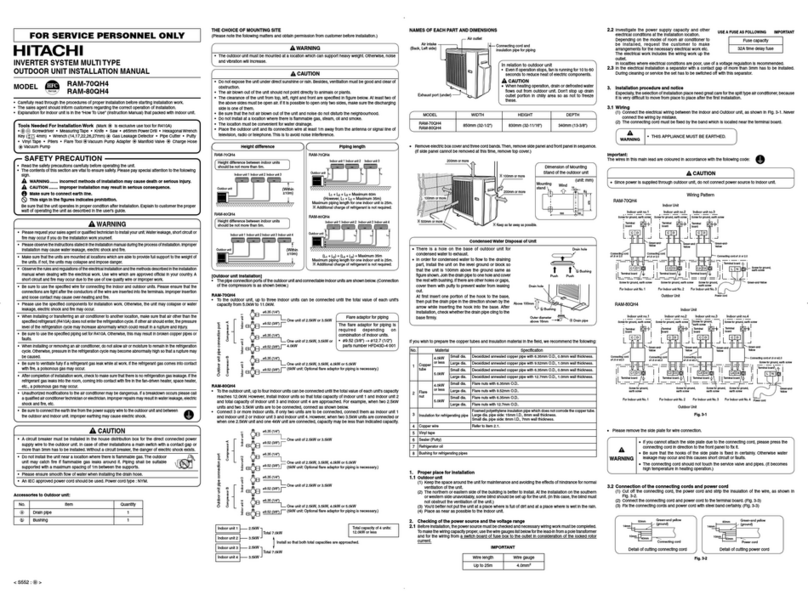
Hitachi
Hitachi RAM70QH4 installation manual
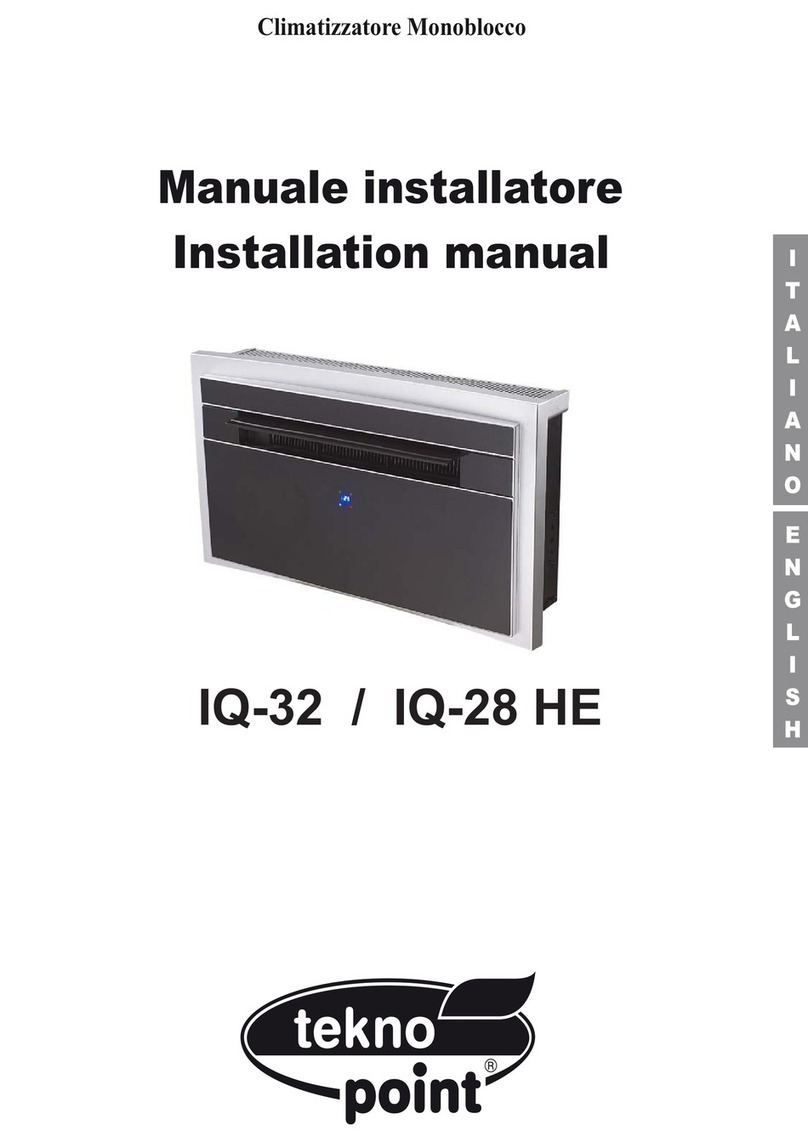
Tekno Point
Tekno Point IQ-32 installation manual
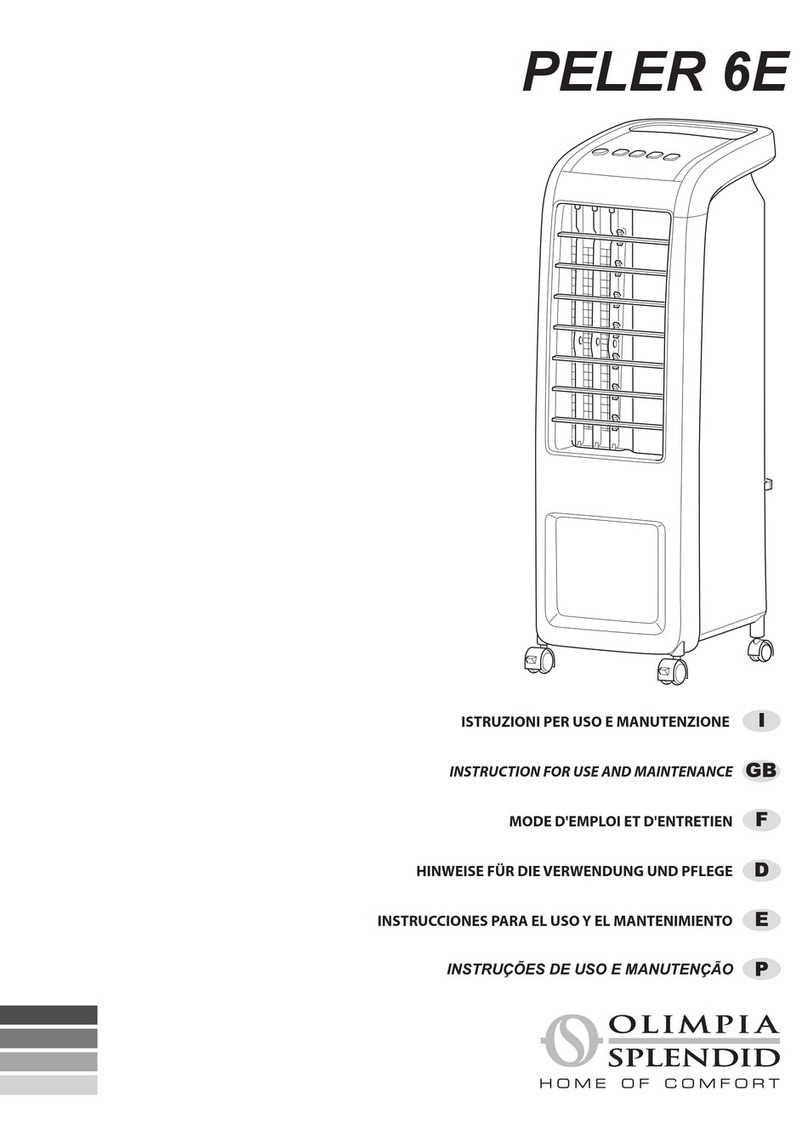
Olimpia splendid
Olimpia splendid PELER 6E Instructions for use and maintenance
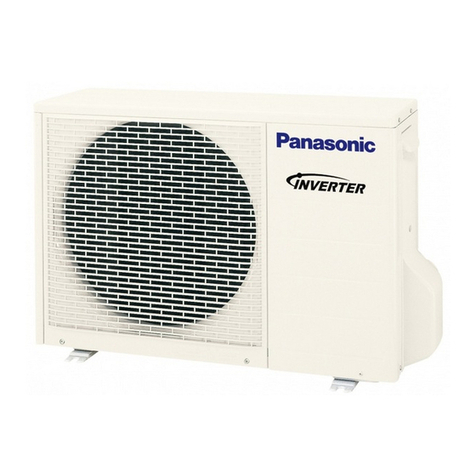
Panasonic
Panasonic CS-CE9LKE Service manual
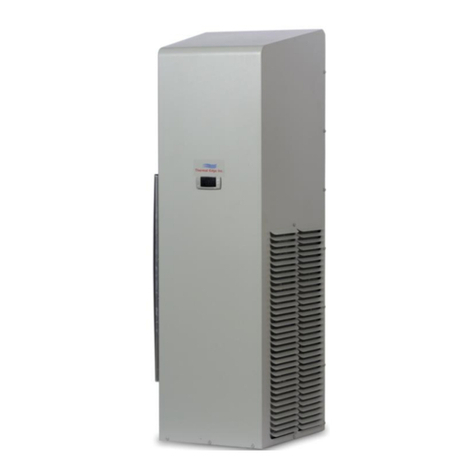
Thermal Edge
Thermal Edge HC121 Series User's & technical manual
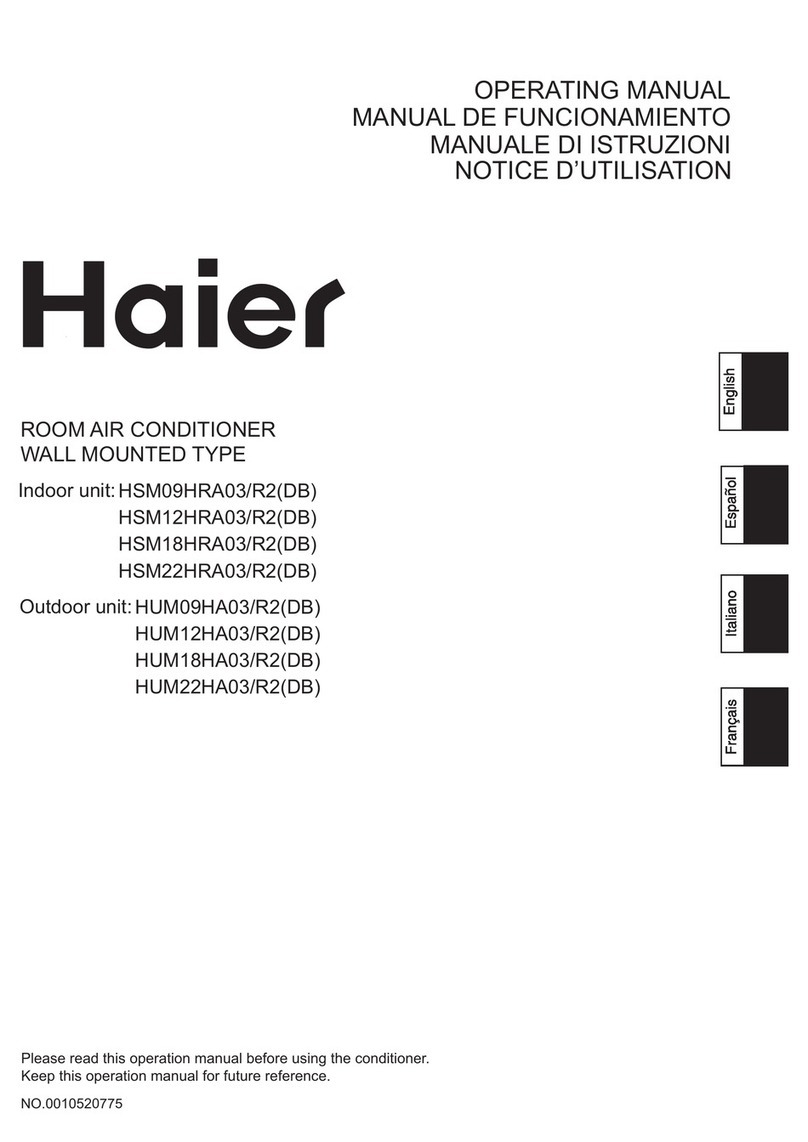
Haier
Haier HSM09HRA03/R2 operating manual


